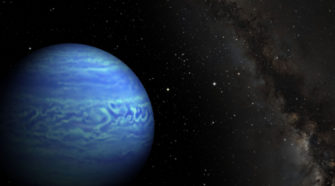Universe
M16: The Eagle Nebula
The Eagle Nebula is located in the constellation Serpens and is one of the most iconic star forming regions in our galaxy. The nebula is also known as Messier 16 or M16 in the catalog of celestial nebulas and star clusters compiled by French Astronomer Charles Messier. This is probably one of the most famous …
Astronomers find a new type of planet: The ‘mega-Earth’
Astronomers announced today that they have discovered a new type of planet – a rocky world weighing 17 times as much as Earth. Theorists believed such a world couldn’t form because anything so hefty would grab hydrogen gas as it grew and become a Jupiter-like gas giant. This planet, though, is all solids and much …
Coldest brown dwarf found nearby
NASA’s Wide-field Infrared Survey Explorer (WISE) and Spitzer Space Telescope have discovered what appears to be the coldest brown dwarf known – a dim, star-like body that surprisingly is as frosty as Earth’s North Pole. Images from the space telescopes also pinpointed the object’s distance to 7.2 light-years away, earning it the title for fourth …
First exomoon possibly found
Titan, Europa, Io and Phobos are just a few members of our solar system’s pantheon of moons. Are there are other moons out there, orbiting planets beyond our sun? NASA-funded researchers have spotted the first signs of an “exomoon,” and though they say it’s impossible to confirm its presence, the finding is a tantalizing first …
Kepler finds nearest twin to Earth yet
Using NASA’s Kepler Space Telescope, astronomers have discovered the first Earth-size planet orbiting a star in the “habitable zone” — the range of distance from a star where liquid water might pool on the surface of an orbiting planet. The discovery of Kepler-186f confirms that planets the size of Earth exist in the habitable zone …
Space sunflower may help telescopes snap pictures of planets
A spacecraft that looks like a giant sunflower might one day be used to acquire images of Earth-like rocky planets around nearby stars. The prototype deployable structure, called a starshade, is being developed by NASA’s Jet Propulsion Laboratory in Pasadena, Calif. The hunt is on for planets that resemble Earth in size, composition and temperature. Rocky …






